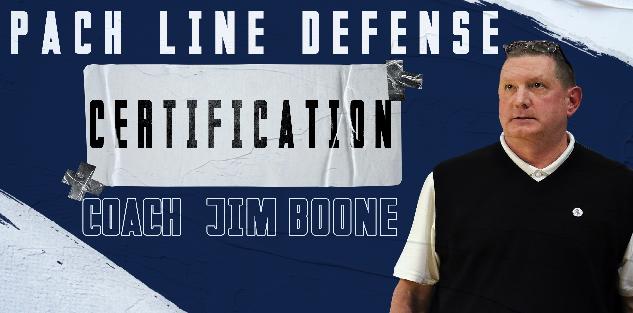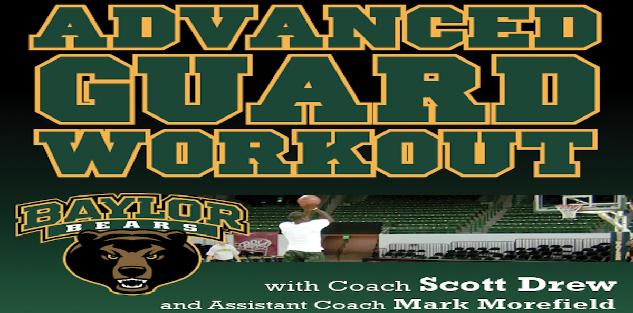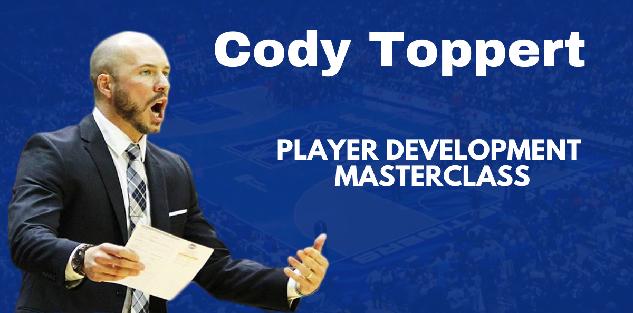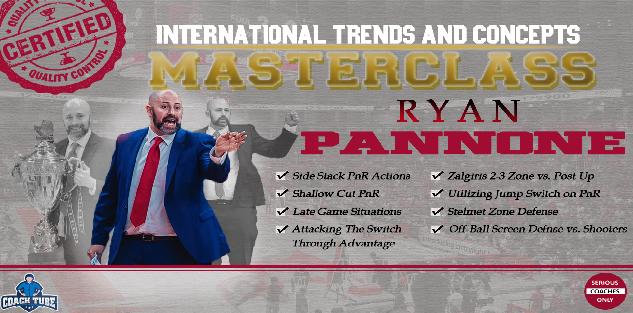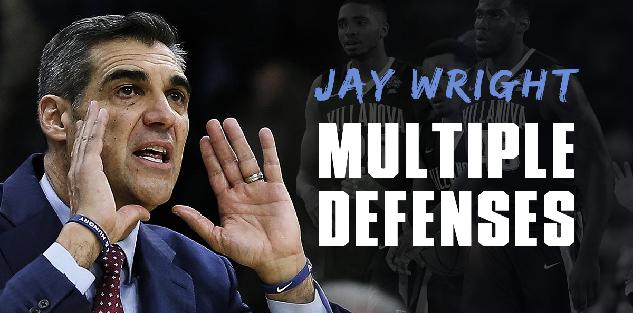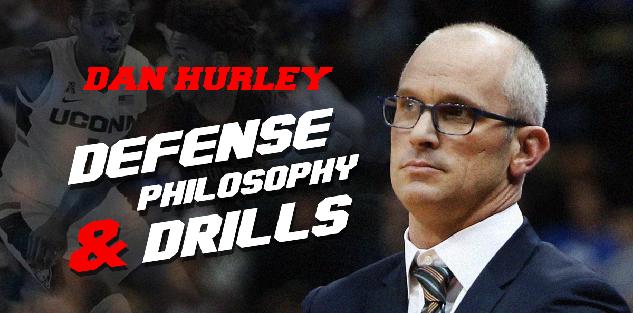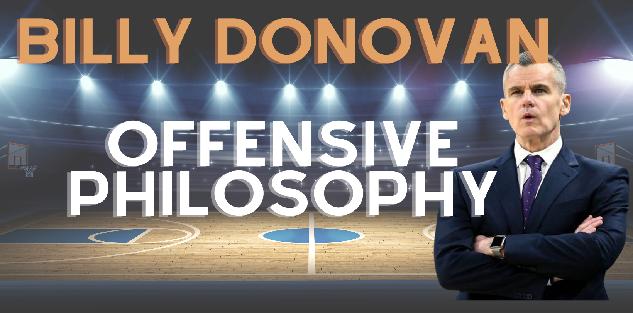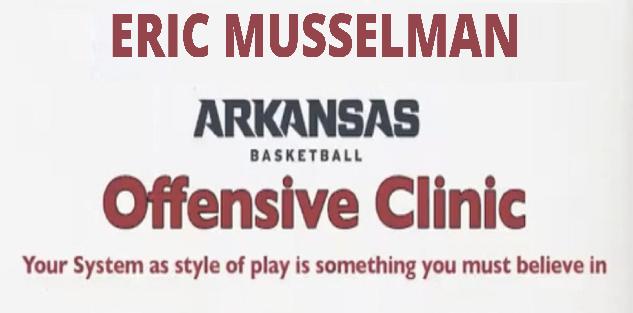Featured courses
- Two Great Game Situational Workouts For the Basketball Offseason by Grant Young
- Two Reads Basketball Players Must Understand Before Executing the Ball-Screen by Grant Young
- Two of LSU Coach Kim Mulkey’s Game-Winning Inbounds Plays by Grant Young
- Three Effective Early-Season Defensive Basketball Drills by Grant Young
- Four Essential Tips For Basketball’s 1-3-1 Zone Defense by Grant Young
- Four Zone Defense Drills to Strengthen Your Team by Grant Young
- How to Beat the Three Most Common Pick and Roll Coverages by Grant Young
- Two Drills to Improve Shooting at the Start of the Basketball Season by Grant Young
- Core Basketball Principles That Dallas Mavericks Coach Sean Sweeney Teaches by Grant Young
- Three Competitive Shooting Drills For Your Basketball Team by Grant Young
- How To Teach The ‘I’ Generation of Basketball Players by Grant Young
- Three Elite Drills to Begin a Basketball Practice With by Grant Young
- How to Build a Championship-Winning Basketball Team Culture by Grant Young
- Two of Texas Women’s Basketball Coach Vic Schaefer’s Tips For Team Culture by Grant Young
- Atlanta Dream WNBA Coach Brandi Poole’s Four Sets for Secondary Offense by Grant Young
- NC State Basketball Coach Brett Nelson’s 4 Crucial Point Guard Qualities by Grant Young
- Kentucky Coach Mark Pope’s Five Guard Rules For Offense by Grant Young
- McNeese State Basketball Coach Will Wade’s 4 Core Pillars by Grant Young
- 4 Tips To Instantly Improve Your Free Throw Shooting by Tyler Linderman
- Assemble a Championship-Caliber Basketball Rotation by Brandon Ogle
- Two of UConn Coach Dan Hurley’s Key Defensive Drills by Grant Young
- Four Post Moves All Basketball Forwards Should Have In Their Bag by Grant Young
- Four of Baylor Coach Nicki Collen’s Midseason Pick and Roll Adjustments by Grant Young
- WNBA Legend Sue Bird’s Two Tips For Attacking on Offense by Grant Young
- Houston Coach Kelvin Sampson’s Three Keys for Building a Basketball Program by Grant Young
- Two of Tom Izzo’s Top Michigan State Defensive Drills by Grant Young
- Four of Olympic Gold Medalist Coach Mechelle Freeman’s Relay Race Strategies by Grant Young
- Three Key Strategies Will Wade Uses to Build a Dominant Team by William Markey
- Five UConn Huskies Men’s Basketball Plays That You Can Use by Grant Young
- Three Tips for Maintaining Team Culture at the End of a Basketball Season by Grant Young
- Three Dribble Drive Motion Drills to Teach Your Basketball Team by Grant Young
- Three Dribbling Drills For Non-Primary Ball Handlers by Grant Young
- Four Advanced Ball Handling Drills For Basketball Guards by Grant Young
- Three Tips to Sharpen Your Post Player’s Footwork in Basketball by Grant Young
- These Three Pick and Roll Drills Are Crucial For Any Ball Screen Offense by Grant Young
- Three Closeout Drills to Improve Basketball Shooting Defense by Grant Young
- Three Tips to Perfect the Packline Defense in Basketball by Grant Young
- Four Keys to Executing the Read and React Offense in Basketball by Grant Young
- Three Tips to Develop Elite Basketball Shooters by Grant Young
- Three Crucial Keys to Executing the 5 Out Offense in Basketball by Grant Young
- These Three Offensive Sets Will Help You Beat Any Zone Defense by Grant Young
- Three Transition Basketball Drills To Play With More Pace by Grant Young
- Three 5 Out Offense Drills Any Basketball Coach Can Use by Grant Young
- Four Vital Techniques for a Motion Offense in Basketball by Grant Young
- Three Baseline Inbounds Plays To Win Your Basketball Team Games by Grant Young
- Four Drills For Sharpening the European Ball Screen Offense by Grant Young
- Three Positioning Tricks For a Basketball Zone Offense by Grant Young
- Three Rules to Perfecting Basketball's Lock Left Defensive System by Grant Young
- UCLA WBB Coach Cori Close’s Two Keys to Winning the Mental Game by Grant Young
- Four of Alabama Coach Nate Oats’ Favorite Basketball Drills by Grant Young
- Three Ways To Turn Transition Offense in Basketball Into Points by Grant Young
- Three Drills to Master Basketball's Pack Line Defense by Grant Young
- Three Transition Defense Drills to Halt Fast Breaks by Grant Young
- Four Offensive Rebounding Drills to Win Second Possessions by Grant Young
- 4 Defensive Technique Drills from Boston Celtics Assistant Coach Brandon Bailey by Marek Hulva
- 5 Drills to Improve Ball Handling by Tyler Linderman
- 13 FUNNY BASKETBALL GIFS by Alex
- BASKETBALL SPEED AND AGILITY: 8 QUESTIONS FOR COACHTUBE EXPERT RICH STONER by Jaycob Ammerman
- Defensive Strategies for Basketball by Ryan Brennan
- 4 Keys To Turning Your Program Into Championship Contender By Dallas Mavericks Coach Sean Sweeney by Marek Hulva
- 5 Components to Creating a Winning Basketball Program by Justin Tran
- Guide to Becoming a Lethal Scorer in Basketball by Justin Tran
- Zone Defense In the NBA Eastern Conference Finals by James Locke
- Mastering Court Mobility: Tips for Effective Movement in Basketball by Justin Tran
- 5 Basketball Shooting Drills: How to Develop a Sharpshooter by James Locke
- 6 Points of Emphasis for a Successful 5 Out Offense by Jaycob Ammerman
- Effective and Efficient Methods to Practice During the Basketball Season by Justin Tran
- Three Great Passing Drills From a Basketball Coaching Legend by Grant Young
- 7 Principles For Perfecting the Princeton Offense in Basketball by Grant Young
- How to Replicate A Modern NBA Offense by Grant Young
- Three Great Two-Ball Dribbling Drills For Basketball Development by Grant Young
- Two Rebounding Drills to Win Your Basketball Team Championships by Grant Young
- How to Improve Your Basketball Team’s Defense With the Shell Drill by Grant Young
- How Baylor Basketball’s Scott Drew Develops Elite Guard Play by Grant Young
- Off-Ball Movement Tips and Strategies: Lessons From the NBA Finals by James Locke
- Player Development: Scott Drew’s Tips for Producing NBA Guards by James Locke
- How to Execute a Spread Offense in Basketball by Grant Young
- Four Quality Quotes From Four Final Four Coaches by Grant Young
- A Guide to the Pack Line Defense by Alex Martinez
- 3 Defensive Build Up Drills to Improve Team Basketball Defense by Grant Young
- Battle of Two Great Coaches: Best Plays from the NBA Finals Contenders by Justin Tran
- 10 Creative Ways Athletic Programs Can Use a Video Board to Raise Money by Coach Williams
- How to Use 3 on 3 to Improve Your Basketball Team by Grant Young
- How to Defend the Pick and Roll by Grant Young
- Mastering Basketball Defense: Techniques, Drills, and Strategies for Success by Justin Tran
- Three Tips From The Coach Who Developed Giannis Antetokoumnpo by Grant Young
- 2023 NBA Draft: Skills and Technique from Top Prospects by Justin Tran
- From College to the Pros: Transitioning the Dribble Drive Offense by Justin Tran
- Positionless Basketball: Redefining Roles on the Court by Justin Tran
- Revolutionize Your Offense: Proven Concepts to Elevate Your Basketball Game by Justin Tran
- 5 Essential Fastbreak Drills Every Basketball Coach Should Know by James Locke
- How to Run a Circle Offense in Basketball by Grant Young
- Game-Changing Strategies: ATO Plays in the EuroLeague and Olympics by Justin Tran
- How to Stand Out at Basketball Tryouts by Grant Young
- How to Improve Your Basketball Team’s Transition Defense by Grant Young
- Indiana Fever GM Lin Dunn’s Two Keys For Women’s Basketball Coaches by Grant Young
- Strength Training Strategies Every Basketball Player Should Have by Grant Young
- A WNBA Basketball Coach’s Four Priorities In Transition Defense by Grant Young
- Three Adjustments to Make When Your Basketball Offense Isn’t Working by Grant Young
- Three Pillars to Applying Defensive Pressure on the Basketball Court by Grant Young
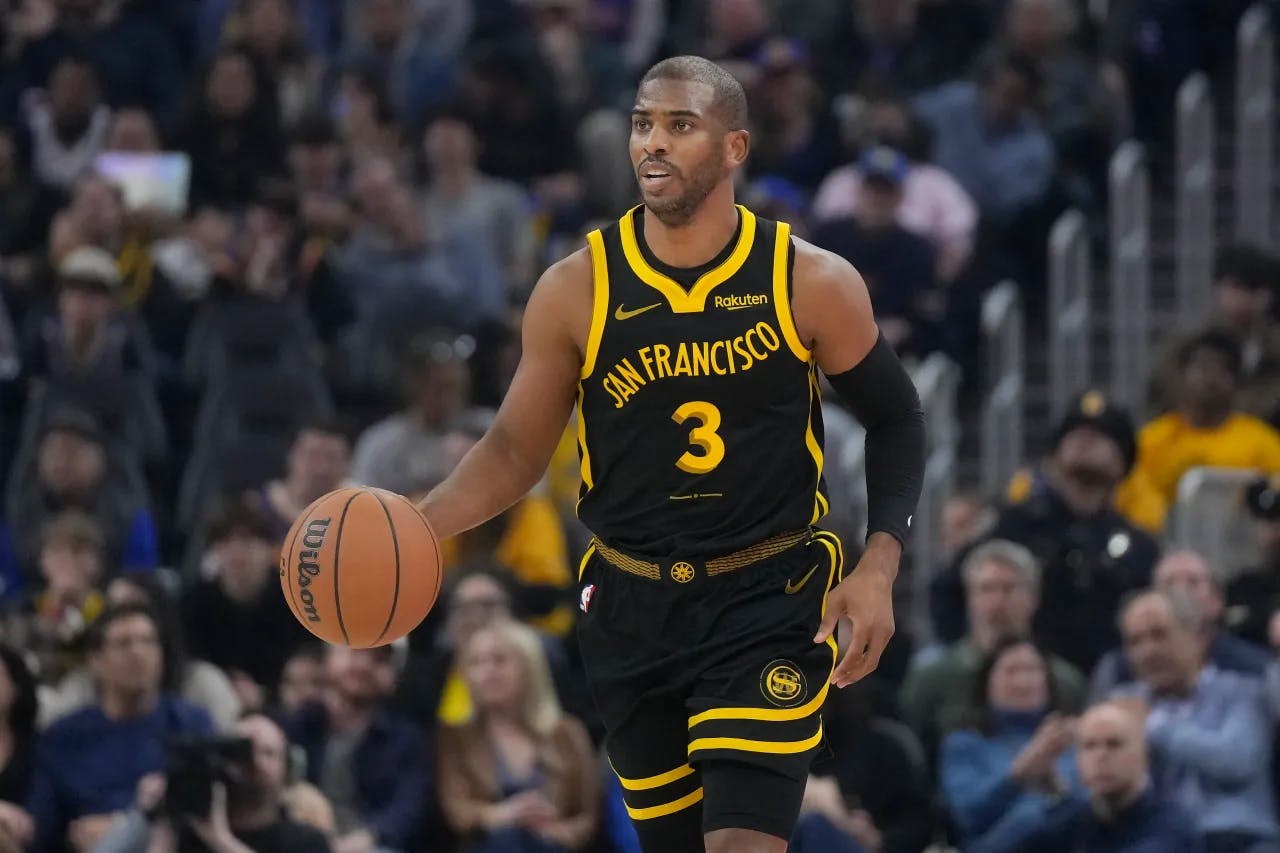
Three Positioning Tricks For a Basketball Zone Offense
- By Grant Young
The zone offense in basketball has become increasingly effective in modern basketball for several reasons:
1. Spacing and Ball Movement: Zone defenses require teams to spread the floor and utilize crisp ball movement. This helps create open shots and driving lanes. Players adept at moving without the ball can exploit the gaps in the defense, leading to high-quality scoring opportunities.
2. Exploiting Weaknesses: Zone defenses often have vulnerabilities at the high post and corners. A well-executed zone offense can exploit these areas, forcing the defense to make tough decisions and potentially leading to mismatches or open looks for shooters.
3. Versatility of Personnel: With the rise of versatile players who can shoot, pass, and drive, teams can adapt their zone offense to different lineups. This flexibility makes it difficult for opposing teams to predict how to defend against them.
4. Three-Point Shooting: The modern emphasis on the three-pointer means that a zone offense can be particularly destructive if it incorporates strong outside shooting. Stretching the defense horizontally can leave players open at the arc, capitalizing on the increased value of three-point shots.
5. Pace and Flow: A well-executed zone offense can maintain a high pace, tiring out defenders while creating rhythm for the offense. Quick ball movement and timely cuts can catch defenses off guard, leading to easy transition opportunities.
6. Player Intelligence and Awareness: Today's players are more skilled and knowledgeable about the game than ever before. They understand how to read defenses, recognize patterns, and make quick decisions that can exploit any lapse in coverage during a zone setup.
7. Reduced Reliance on Isolation: By focusing on team play and ball movement, zone offenses can reduce the reliance on isolation plays that can become predictable. This unpredictability makes it harder for defenses to adjust.
However, these clear benefits are only available to coaches and teams who know how to successfully implement the zone offense into their offensive strategy. To ensure that you know how to do so, we’ve taken three lessons from coaches who know the zone offense like the back of their hand and included them below for your use.
Scott Morrison - Preferred Zone Attacks
Scott Morrison is an assistant coach with the Utah Jazz.
Before joining Utah’s coaching staff, Morrison joined the Boston Celtics as an assistant coach after spending the three previous seasons as part of the organization as the head coach of the team’s NBA G-League affiliate, Maine Red Claws. During his remarkable rookie campaign at the helm (2014-15). Prior to the 2014-15 season, Morrison was with the Red Claws as a player development coach for the 2013-14 campaign.
Coach Morrison’s ‘Zone Offense’ course illustrates some of the best attacks that a zone offense can employ. One way is to ensure that your offense is spaced out (especially with a player in each corner) with your dunker filled. This is essentially where a zone offense becomes dependent on the dribble drive, with an aggressive guard that can attack the paint and either get fouled, make a layup, or dish it out to a man wearing at either corner.
Another option (especially if you don’t have many guards who are great off of the dribble alone) is to focus on executing ball screens and pick and roll players early in on the shot clock.
Coach Morrison noted that these concepts are effective on a zone offense because they encourage more threats, more often, in a possession. A team can create an advantage early, and if that initial advantage doesn’t bear fruit then there will be other opportunities to capitalize and defeat the defense.
Robert Starkey - Screens Off Ball
Coach Bob Starkey returned to the LSU Tigers in April 2022 to serve as the associate head coach on Coach Kim Mulkey’s staff. Starkey’s impact was immediately felt, helping lead the Tigers to their first national championship in 2023.
Starkey came to LSU after one year of coaching at Auburn. From 1989-2011, Starkey coached at LSU with tenures with both the men’s and women’s programs, coaching basketball legends like Shaquille O’Neal and Sylvia Fowles.
Coach Starkey’s ‘Things To Do When Your Zone Offense Isn’t Working’ course discusses why setting off ball screens is vital in a successful zone offense.
He stresses, “Where you place all the players on each pass, cut, and movement is big.” For example, if you’re going to have the point guard pass it into the post and then set an off-ball screen to a wing player on the strong side, it’s crucial to have another player available on the opposite wing.
This is because the zone defense does a good job of stopping the threat of the off-ball screen or the player on the zone’s outer edge collapses down, the post player won’t be trapped and will have an outlet on the perimeter to pass to.
Todd Simon - Corner / Short Corner
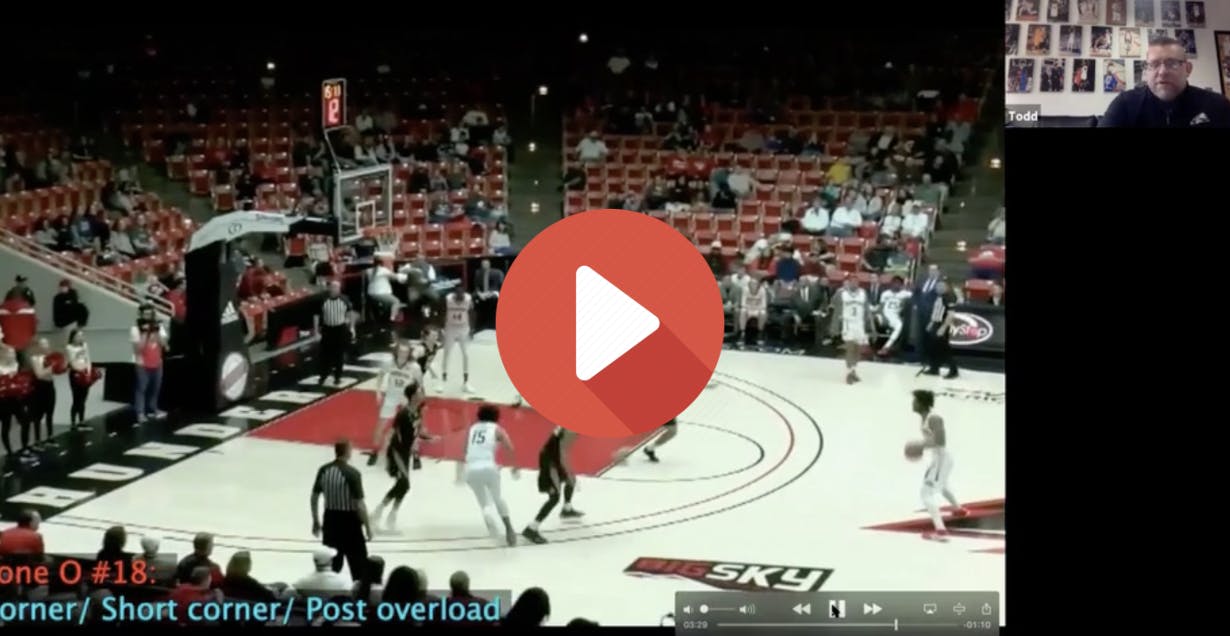
Todd Simon will enter his second season as the head coach of Bowling Green’s men’s basketball program in 2024-25, being hired to the post in March of 2023. Simon joined the Falcons after spending seven seasons at Southern Utah as the head coach of the Thunderbirds.
In his first season with the Falcons, Coach Simon tallied 20 wins for just the 10th time in the program's MAC era, becoming one of 10 teams in the nation to go from 20 losses in 2022-23 to 20 wins in 2023-24.
Coach Simon’s ‘Zone Offense’ course discusses one trick to beating a zone offense: Having a wing on the opposite side of where the ball is located to make a back cut across to the other corner.
Not only will this be difficult for a zone defense to track, but having a player on one corner and another on that same side’s post is nearly indefensible for one player in a zone; especially if the ball is quickly passed into the post.

